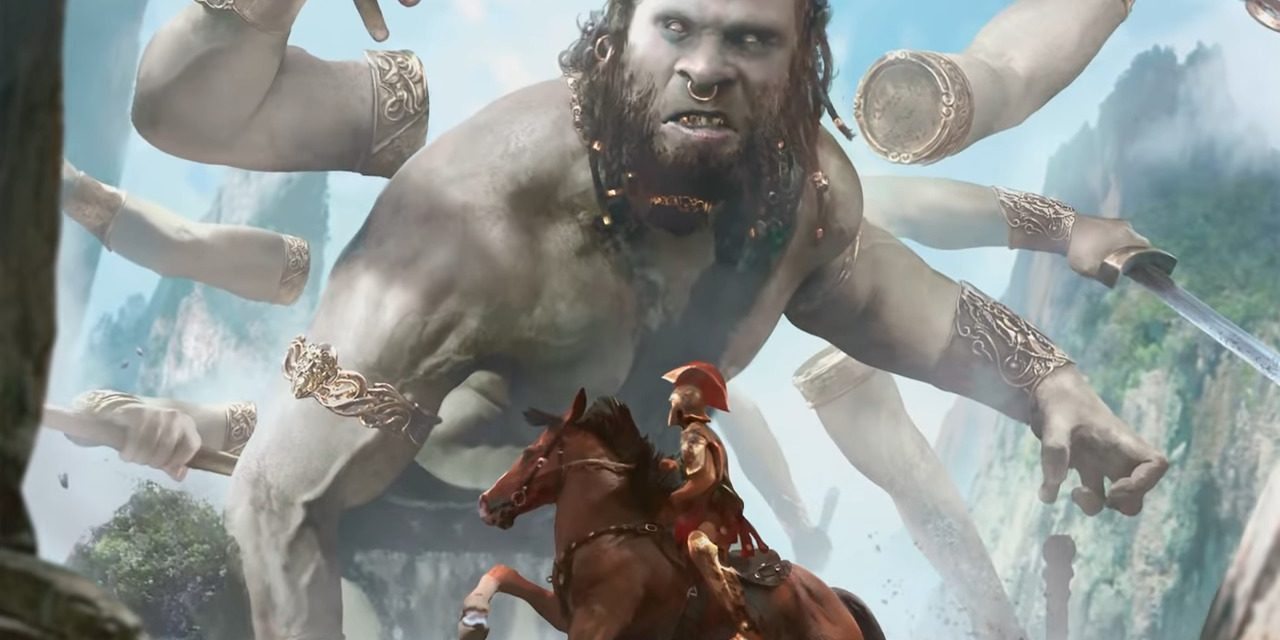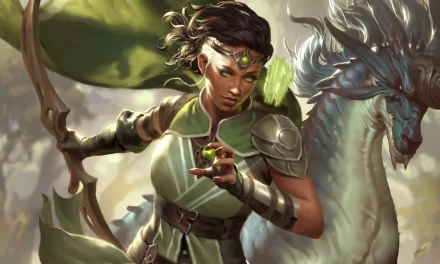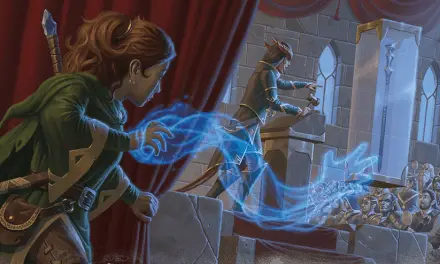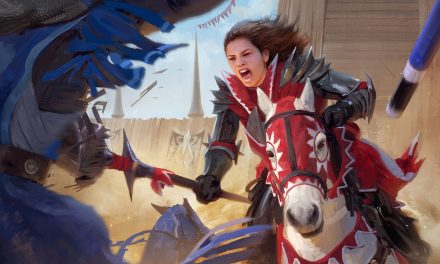In any conversation about playing D&D or planning a combat encounter, you are bound to hear the term “Action Economy.”
But what is Action Economy?
In this article, we will define what that means and outline how it’s used by both players and Dungeon Masters.
What is the Action Economy in D&D 5e?
Action economy is effectively a measure of what creature or character can do each turn.
How many attacks they can make, abilities they can use, and so on are all factored in as a part of the concept of action economy.
More often than not, action economy is mentioned in conversations around optimization. This may be the optimization of individual characters or it may be a DM optimizing a combat encounter.
In either case, the goal is to look at the game through a mechanical lens. Seeing the number of options available to any given creature or character as a type of value, you determine the maximum action value of any given combatant.
Action Economy for Player Characters
Action economy is looked at by players who are wanting to optimize their character’s performance.
When building a character, it is important to know your options on each turn. This lets you see just how much output your character is capable of per turn.
As we covered in our explanation of Actions in Combat, characters’ turns consist of:
- Movement – Up to your movement speed
- Action – Things like attacking, casting most spells, Dashing, or Disengaging
- Bonus action – Used by some spells and abilities like Misty Step or Bardic Inspiration
- Interaction – Something quick like opening an unlocked door that wouldn’t require an Action
- Reaction – Activated on another creature’s turn but resets at the start of yours. This includes Attacks of Opportunity or spells like Counterspell.
With these in mind, a player would look to see how they can get the most value out of each turn.
A level 6 Human Bard of the College of Swords, for example, might see their maximum turn value as:
“Move 30 feet, take two attacks with my rapier, use my bonus action to give the Fighter my Bardic Inspiration, and be ready to take an attack of opportunity if the enemy tries to escape.”
When the character levels up, they may choose to multiclass as a level 6 Bard/level 1 sorcerer to improve their action economy. As a level 1 sorcerer, they could now reliably keep the Shield spell in their back pocket as a reaction to improve their Armor Class.
We’ll talk more about multiclassing in another article, but improving a character’s Action Economy is often the main reason that a player chooses to multiclass.
Action Economy for Dungeon Masters
While understanding Action Economy works well for Players who want to optimize their character, it is vital for Dungeon Masters to understand it.
I think all Dungeon Masters have experienced the painful side of action economy in D&D 5e at one point or another.
I’m talking about moments where the DM had a big boss fight prepared only to watch the players destroy their enemy in a round or two. Despite the Boss being much stronger than the party, they barely even got a single turn!
For DMs, understanding Action Economy is the key to designing combats that work well. You want encounters that are not necessarily too hard but also not too easy. Some may be harder than others (and that’s a good thing), but should still feel balanced and fun.
The Dungeon Master should have an understanding of what each party member’s maximum action value is. Using this, they can build encounters with creatures that play to the party’s action value.
Rather than sending 5 goblins that won’t even survive a round, have another group firing arrows from a ledge overhead. In the next round, maybe another couple of goblins come running up with a Bugbear.
Boss Fights
As a general rule of thumb, the winner in combat is the one with more turns.
If the party is facing the boss of the dungeon alone, look at the opportunity of the action economy.
Yes, the boss deals a ton of damage if he hits. But he’s making, what, two attacks per turn? Maybe three?
Meanwhile, the party is doing stuff like:
- The Fighter makes two attacks with their spear, uses their Action surge ability, takes two more attacks with their spear, and then uses their Polearm Master feat to make another attack as a bonus action.
- The Paladin makes two attacks with their greatsword, uses Divine Smite on both hits, and (because they have the Sentinel feat) prepares to make an attack of opportunity if the Boss attacks someone else on their turn.
- The Bard casts Vicious Mockery on the Boss, uses a bonus action to give the Fighter a Bardic Inspiration, and plans to use their Cutting Words ability as a reaction when the Boss attacks on their turn.
- The Ranger (with the Crossbow Expert feat) fires two bolts with their first hand crossbow and uses a bonus action to fire a third bolt from their off-hand crossbow.
So, your boss gets two or three attacks per turn…
Meanwhile, the party has just unleashed 11 powerful attacks on them while buffing themselves and debuffing the boss.
If the boss goes to attack on their turn:
- They are doing so at disadvantage because of the Bard’s Vicious Mockery cantrip.
- They will almost certainly have their roll reduced by the Bard’s Cutting Words reaction.
- Will still get smacked again if they attack someone other than the Paladin (thanks to the Sentinel feat.)
If the boss rolled poorly on Initiative, he probably did not even get a turn.
Action Economy is Weighted Towards Players
As a Dungeon Master, you have to understand that the Action Economy is fundamentally weighted towards Players. That’s not a bad thing, but it is something that you absolutely have to consider when planning an encounter.
This is especially true if it’s a boss that you’ve been hyping up for several sessions now. While the Players may be laughing and celebrating their speedy victory, you are feeling disappointed and hoped for something different.
You expected tension and white-knuckled drama as a fierce showdown. Instead, you just watched your BBEG get ripped apart by gremlins fueled up on Mountain Dew and pretzels.
It mostly comes down to the fact that there are very few monsters or enemies that the party will face who have bonus actions or any kind of special reactions. Some, like Gnolls with their Rampage ability, have options, but this is pretty rare. Similarly, most reactions are limited to attacks of opportunity.
Legendary creatures get legendary actions and lair actions
A mechanic in 5e that helps to even out the Action Economy between the party and particularly fearsome enemies is the inclusion of Legendary Actions and Lair Actions.
Looking over the stat blocks for legendary monsters like Beholders or Villains like Strahd Von Zarovich, you will likely see one or both of these actions.
Legendary and Lair Actions give the enemy extra things that they can do during the round.
A Beholder, for example, gets 3 Legendary Actions using a random eye ray each round. It uses these one at a time at the end of another creature’s turn. At the start of the Beholder’s turn, it regains any spent Legendary Actions.
If the party is fighting the Beholder in its lair, it gets Lair Actions on initiative count 20. In the case of the Beholder, these allow it to manipulate the environment against the players.
These effects include making the area into difficult terrain, firing random eye rays from solid surfaces in the lair, and having grasping appendages grow the walls to attempt to restrain characters.
We’ll go into more detail about Legendary and Lair Actions in another article. For now, make sure that you, as a DM, also factor these in while considering the Action Economy of your combats.
Always Have Minions
Minions are great, aren’t they?
They can do some damage to the party, but they also work to soak up damage. Mechanically, they work to stop the party from dogpiling your Boss like we discussed earlier.
But even outside of the big fight itself, you want to have an encounter or two before the party face down the boss.
If they are coming in with all of their HP, spells, and abilities, it will be a cakewalk.
If the party has to be more cautious with their resources, it will start to tilt the Action Economy back towards a neutral and fair fight. They won’t be opening with all of their strongest abilities as they try to keep some ready for any trickery that the Boss may have in store.
By having some encounters before the boss fight and including several minions in the boss fight, you can create that dramatic moment that you are going for.
Action Economy’s Effect on Challenge Rating
The Challenge Rating system is not a perfect measurement.
Generally, the CR represents what level a party of four characters should be at for it to be a “fair” fight. But, in a game like D&D with so many options and variables, it’s virtually impossible to account for everything.
Are the party min-maxxing their characters? Do they have magical items? How many resources are they going into the fight with?
A monster’s CR is more like a general guideline for the Dungeon Master to consider when planning an encounter.
A CR 3 Manticore can rip a party of four level-three characters to shreds. Of course, in this particular encounter they have used their resources for the day, don’t have any ranged attacks, and just finished fighting some goblins (so they’re not at full hp).
But if the same party of characters haven’t used any resources, do have ranged attacks, and are at full hp… The Manticore probably won’t stand a chance despite getting three attacks per turn!
Because of this, encounters should not be planned strictly in line with a creature’s CR. It should be a combination of CR, expected resources spent, and action economy.
Conclusion – Action Economy in D&D 5e
I hope that this has helped clear up what people mean when they talk about Action Economy.
While it’s useful for players to know, DMs have to pay particularly close attention to it.
Players will want to make sure that they are getting that maximum value out of their character in combat. This is, of course, why it’s so important to read over your character sheet and learn their abilities.
For DMs, it’s a vital consideration for planning any encounter. Always shoot for that area that challenges the players but isn’t too hard or too easy. Just like Players should know what their characters can do, the DM should as well!
Want to talk about Action Economy in D&D 5e? Say hi in the comments!









